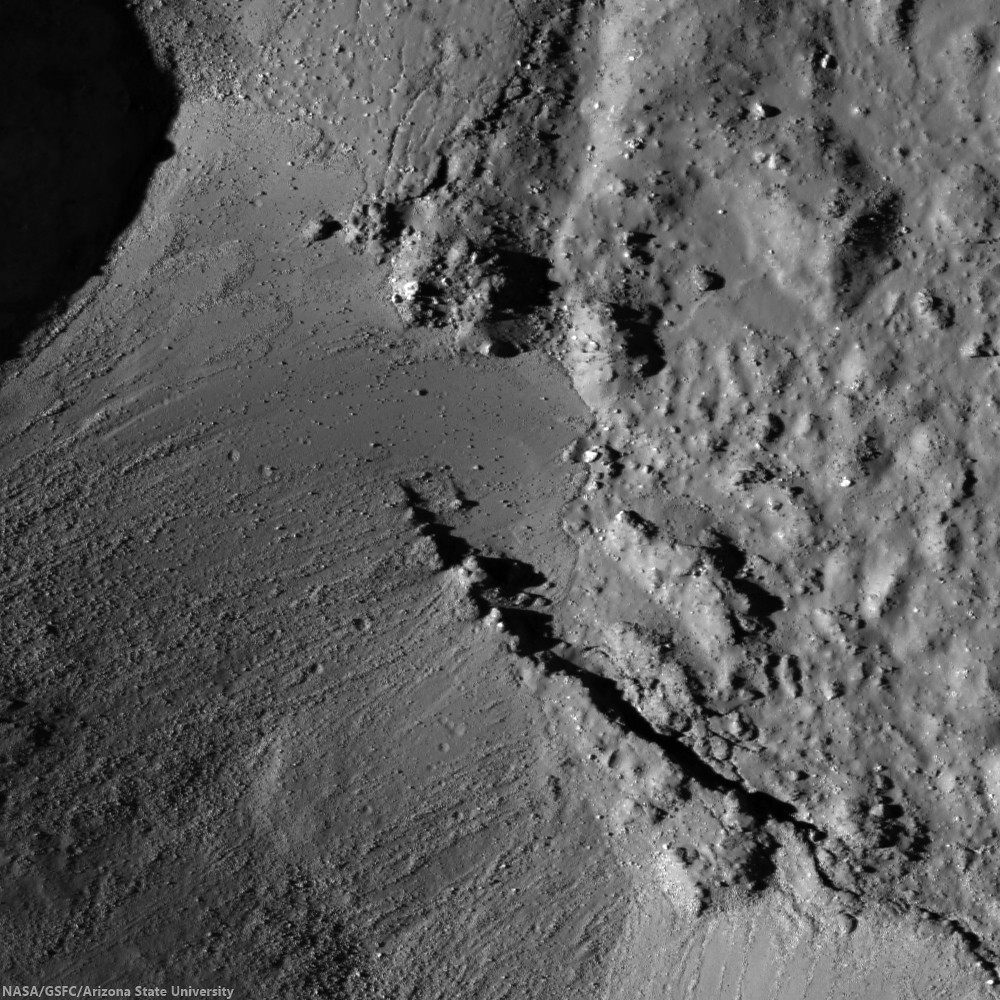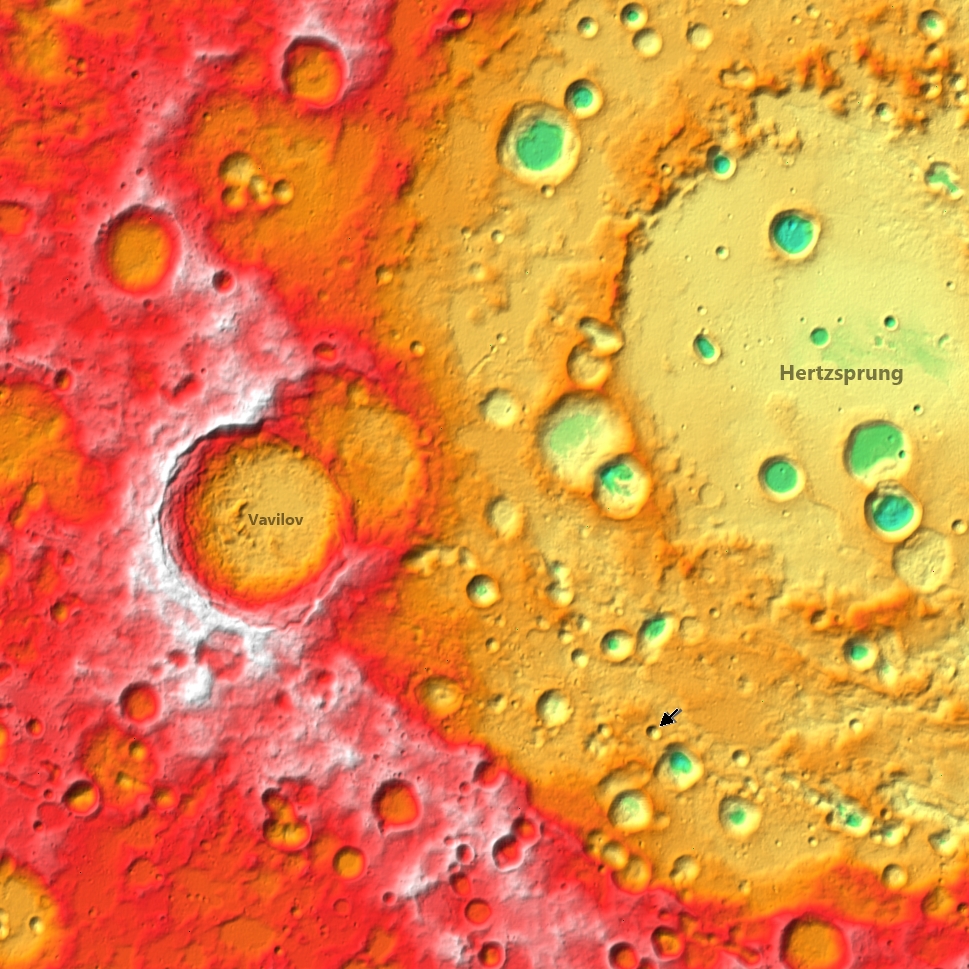 |
| Debris avalanche covering an impact melt pond inside an unnamed crater floor. From LROC Narrow Angle Camera (NAC) M182038126R, LRO orbit 11934, January 24, 2012, centered on 4.135°S, 227.677°E, angle of incidence 56.58° over a field of view 1083 meters across, resolution 1.08 meters from 107.13 km. Downslope is toward upper right, north is to the top [NASA/GSFC/Arizona State University]. |
Hiroyuki Sato
LROC News System
Today's Featured Image highlights the southwestern edge of the floor of an unnamed crater (6.8 km in diameter), located in the SW corner of the degraded Hertzsprung basin (540 km diameter). The rough hummocky surface (upper right) corresponds to an impact melt pond, which covers the floor of this crater. The debris avalanches originated from the crater wall and covered the melt pond surface in the lower left. These debris deposits follow the topographic gap along a fracture extending to the lower right from the center of this image, indicating that the fracture formed before the avalanche.
Impact melt ponds usually develop fractures and deformations of their surfaces (e.g. Melt and more melt, Channels And Fractures). The cause and timescale of such modification is unclear and still under discussion (e.g. Ashley et al., 2012) but is likely due to the crater subsurface re-adjusting as the impact melt cooled and hardened. The shape of impact craters slowly evolves over long periods of time. Thanks to the relatively slow erosional processes on the Moon relative to the Earth, we can observe a series of craters from young to very old with NAC images, helping scientists understand the process of crater formation and subsequent modification.
Explore the debris avalanche inside this young fresh crater in full NAC frame, HERE.
Related Posts:
More Impact Melt!
The View Inside of a Tilted Crater
Schiaparelli E
Channels And Fractures
Impact melt outside Wiener F
Rippled Pond
Melt and more melt
LROC News System
Today's Featured Image highlights the southwestern edge of the floor of an unnamed crater (6.8 km in diameter), located in the SW corner of the degraded Hertzsprung basin (540 km diameter). The rough hummocky surface (upper right) corresponds to an impact melt pond, which covers the floor of this crater. The debris avalanches originated from the crater wall and covered the melt pond surface in the lower left. These debris deposits follow the topographic gap along a fracture extending to the lower right from the center of this image, indicating that the fracture formed before the avalanche.
 |
| The NAC frame as context for the LROC Featured Image (frame), showing the unnamed crater floor in Hertzsprung basin within a 3 km field of view [NASA/GSFC/Arizona State University]. |
Related Posts:
More Impact Melt!
The View Inside of a Tilted Crater
Schiaparelli E
Channels And Fractures
Impact melt outside Wiener F
Rippled Pond
Melt and more melt
 |
| Color shaded LROC digital elevation model shows the small crater in starker contrast not readily visible in pure optical photography (arrow, right of lower center), in the ancient Hertzsprung basin and nearby Vavilov crater. 400 km field of view, orthographic projection from LROC WMS image search map [NASA/GSFC/Arizona State University]. |



No comments:
Post a Comment